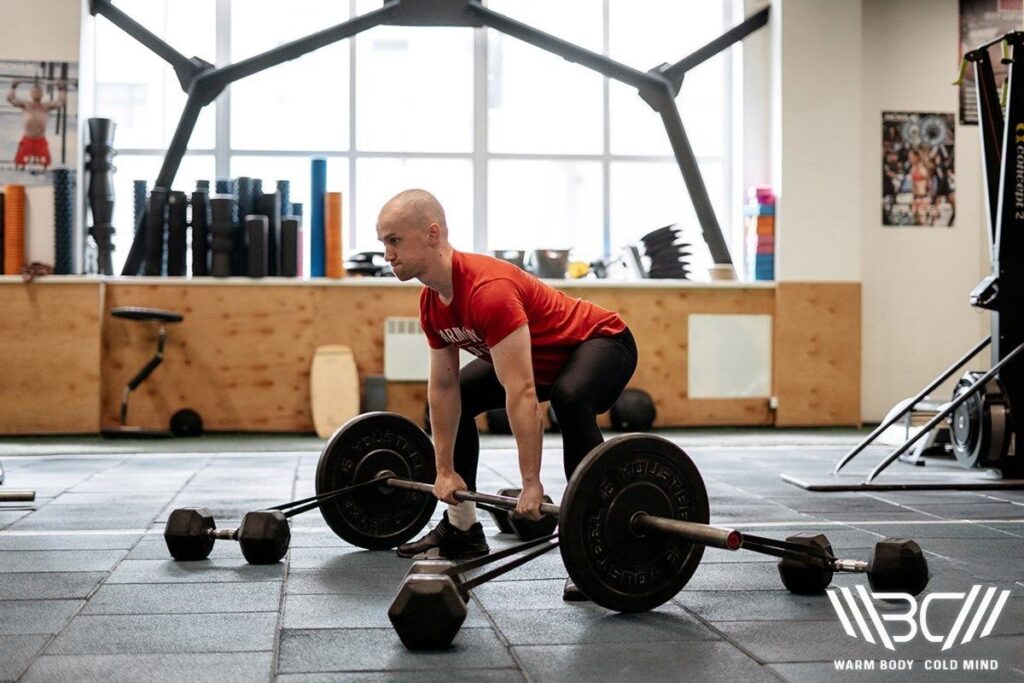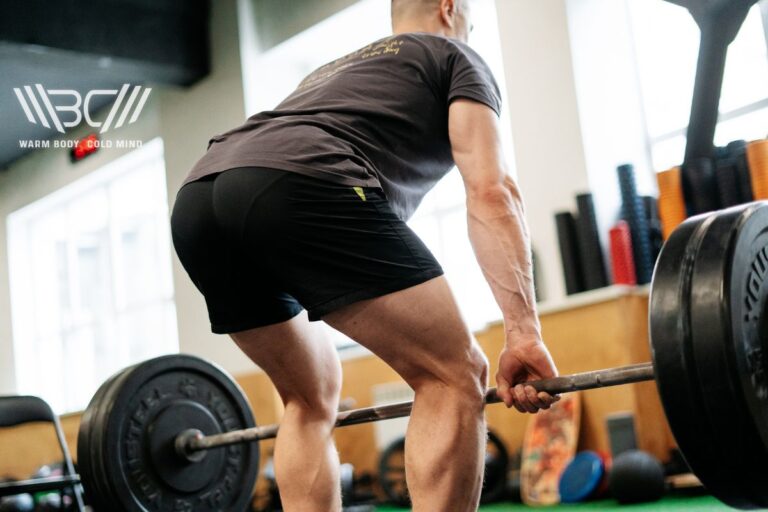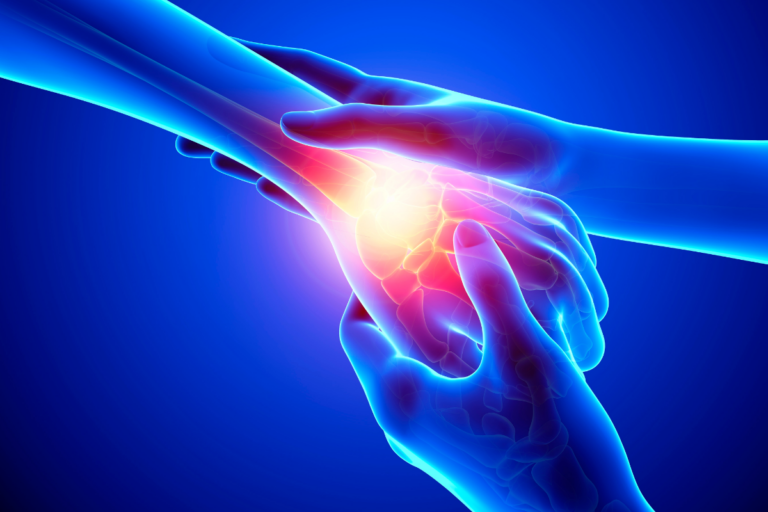Banded Deadlift: Everything You Need to Know
Whether your goal is to develop proper movement mechanics, or enhance your technique and strength, the banded deadlift is a great variation that makes your workout challenging and helps you to achieve your desired results.
Contrary to popular belief, banded deadlift is not only reserved for advanced or elite lifters. Beginners and non-professional lifters can also benefit from deadlift with bands.
In this article, we will cover the benefits, drawbacks, and variations of bands for deadlift. We will also discuss factors to consider when choosing a banded lift and answer a few frequently asked questions.
A banded deadlift involves adding a resistance band to your deadlift. This makes the workout more challenging, offering benefits such as improved technique, strength, speed and power.
Banded Deadlift: What It Is and How It Works?
The banded deadlift is a variation of the deadlift, where you attach a resistance band to the barbell. This adds more resistance to the workout, making the lift more difficult and beneficial.
The barbell deadlift with resistance bands works almost like a conventional barbell deadlift. However, the difference is the resistance in the movement. As you pull the load from the floor to the upper leg, resistance from the band will kick in, thereby making it more difficult and forcing you to apply more force.
Any lifter needs to learn how to set up banded deadlifts. The common ways to set up a deadlift include using a specialized deadlift platform with pins to secure the bands and wrapping up the band around the bar.

5 Benefits of Banded Deadlifts
Here are some benefits of banded deadlift:
✅ Improves Power and Speed
Lifting a deadlift with bands adds extra resistance and forces you to apply more energy. As time goes on, you will start building momentum and power. This enhanced momentum and power will transfer to your overall performance.
Clinical trials show that a banded deadlift produces higher force output.
Another study suggests that band tension improves power and velocity.
✅ Improves Technique and Proper Movement Mechanics
A banded deadlift helps you to improve your technique and skills. As you deadlift with bands, you will be forced to keep up with the proper route and placement. To maintain the proper path and placement, you will be encouraged to improve your technique, especially if you notice you’re deviating from the right position.
As you pull the deadlift, the band will exert resistance, making the lift more difficult. The proper path for a deadlift runs vertically from the floor to your hips. Straying from this path will alter the direction of the barbell and may throw you off balance.
However, barbell deadlift with resistance bands makes you more disciplined, enhancing your techniques.
✅ Speeds up Recovery
If you are looking for ways to speed up your recovery, then a resistance band deadlift is a good option. Performing a lightweight deadlift with bands will engage, strengthen, and repair those weak and inactive muscles. This speeds up recovery.
Another advantage is that you won’t need to leave the comfort of your house.
Surprisingly, scientific studies have proven that performing light posterior chain workouts such as banded deadlifts are effective in relieving low back pain.
✅ Builds Muscular Strength
Resistance band deadlift helps build muscular strength by targeting several groups of back muscles such as hamstrings, calves, and erector spinae. Furthermore, a banded deadlift also targets some muscles at the front side of the body, such as the abdominal and core.
The core muscles help maintain a stable body and upright body posture, increasing your maximum lift load.
As you become stronger, you will improve in your lifting and achieve your target goals faster.
✅ Provides a Full-Body Workout
Deadlift with resistance bands provides a full-body workout because they target almost all the muscles at the back, such as the posterior chain and front side of the body, like the abs and core.
Therefore, if you want a full-body workout, you don’t need to incorporate other exercises into your banded deadlift because it gets the job done.
Subscribe!
The latest reviews of must-have home gym training equipment, apparel, and supplements that will enhance your performance and bring you new results.
5 Disadvantages of Performing Barbell Deadlifts With a Resistance Band
Here are some disadvantages of performing barbell deadlifts with a resistance band:
❌ Easily Outgrow the Resistance Band
As a banded deadlift provides resistance that strengthens your muscles, over time, you become accustomed to it. This implies that deadlifting with bands becomes easier. That’s why most lifters make their workout more challenging by adding one or more resistance bands.
❌ Difficulty in Exercising Muscles Equally
While banded deadlifts target several muscles, it’s difficult to exercise your muscles equally through its traveling distance. This is because a banded deadlift provides low resistance at the start of the motion and higher resistance at the end.
Scientific studies reveal that the Elastic Resistance Band (ERB) produces lower muscular activation when the bands are slack.

❌ Allergies
Some resistance bands are composed of latex. Some lifters might experience swelling or redness as a result of their allergy. However, if you are allergic to latex, you can consider getting latex-free resistance bands.
❌ Measuring Resistance
With a resistance band, it’s difficult to measure your resistance or keep track of your overall progress.
❌ Injury Risk
Performing deadlifts with resistance bands is generally safe initially. However, over time, resistance bands degrade and lose their strength. Deadlifting with degraded resistance bands can break and cause serious injury.
Also, an Improper banded deadlift setup can throw you off balance and pose a risk of injuries because it can snap free anytime.
5 Best Deadlift Variations With Resistance Band
1. Classic Deadlift
This is a variation of a banded deadlift where your hands are positioned by the side of your body, rather than in front. By allowing you to manipulate your legs, you can easily focus on your quads or posterior chain.
Muscles worked on in classic deadlift include hamstrings, glutes, quads, upper back and erector spinae.
You can set up a classic deadlift in two ways, depending on where you want to put more focus. The major difference is your knee placement.
If you want to focus more on the quads, position your knee forward while keeping an upright back with less hip flexion, like a squat.
If you want to focus more on the posterior chain, ensure your shins are vertical with more hip flexion, like a traditional deadlift.
Some tips to set up classic deadlifts are:
- If you have trouble finding a good width, jump and check where your feet land.
- Always keep your butt back and go down with your shoulders straight
- Ensure your arms are in line with the bands
- Maintain a straight back

2. Sumo Deadlift
The Sumo deadlift is another variation of the banded deadlift. It involves lifting something from the ground, just like the conventional deadlift. However, sumo deadlift requires more knee flexion and less hip flexion. You need to maintain a vertical torso.
Banded sumo deadlift works on the glutes, quads, upper back and erector spinae muscles.
Some tips for setting up a banded sumo deadlift are:
- Maintain a wide stance, 2 to 2.5 hip-width distance
- Ensure your chest is as up as possible
- Your arms should be in a straight line as the floor.
- Go low enough until your hands reach halfway down your shins
- Hold the band on the inside of your legs
- Always move your body straight up

3. Romanian Deadlift
The Romanian deadlift is a variation of the deadlift that focuses more on the posterior chain. This requires less knee flexion and more hip flexion. Most lifters who want to develop their glutes choose this variation. Banded RDL with a barbell offers similar benefits to applying your own weight.
Romanian deadlift works on the glutes, hamstrings, upper back and erector spinae.
Some tips on how to set up a Romanian deadlift are:
- Ensure you build up enough tension in your hamstring
- Avoid choosing knee flexion over depth
- You should be able to reach a few inches beneath your knee
- This requires slow movement, therefore, take your time
4. Single-Leg Deadlift
Single-leg deadlift is a variation where you perform the deadlift on one foot. It is similar to the Romanian deadlift. It helps you maintain balance and stability. A single-leg deadlift activates the gluteus mediums. This muscle is found outside of the hip and helps keep your hips rigid while running or walking.
Scientific studies have proven that gluteus medius plays a crucial role in reducing low back pain.
Single-leg deadlift works on the glutes (particularly the gluteus mediums), upper back, hamstrings and erector spinae.
Some tips on how to set up a single-leg deadlift:
- Begin in an upright position on one foot
- Ensure your shoulders pull back and your back is straight
- Ensure your hips sit back and lower your torso
- You can use your non-standing leg to kick back and assist with balance
5. Stiff-Leg Deadlift
This is a deadlift variation where your knees will be stiffer and arms positioned close to your feet. It is similar to the Romanian deadlift.
A stiff-leg deadlift with resistance bands works on the hamstrings, lower back and glutes muscles.
Some tips on how to set up a stiff-leg deadlift:
- Ensure your legs are almost completely straight
- Maintain a straight back
- Ensure your arms are close to your feet
Which Resistance Band to Pick for the Deadlift?
Before choosing a resistance band, it’s vital to understand that the band tension varies and depends on the size of the load you deadlift. It’s advisable to get bands with high tension as you get stronger.
Here are some factors to consider when choosing resistance bands:
1. Consider the Tension and Strength of the Band
The first factor to consider is the band’s tension and strength. If you’re a beginner, you should begin with lighter resistance bands. Some bands provide additional resistance of 15 to 35 lbs. If you are an experienced lifter, you can opt for bands with high strength.
2. Consider Material Type
Resistance bands come in either an elastic fabric or rubber latex. You can choose any based on your personal preference. If you are allergic to rubber latex, you can go for elastic rubber.
However, elastic rubber is ideal for lower-body workouts. On the other hand, rubber latex offers more stretch and is ideal for upper-body exercises.

3. Prioritize Quality
It’s vital to prioritize the quality of the resistance band. There’s nothing as annoying as seeing your bands snap in the middle of a workout session. Thicker bands are generally more durable and last for longer periods.
As a general precaution, check for wear or tear before using it.
4. Consider Accessories
Many resistance bands come with a simple band loop. Depending on what you plan to use them for, you can go for bands with various accessories such as door attachments, handles, or ankle cuffs. If you are a beginner, you can keep it simple.
Brief Reviews of Recommended Products
Rogue Monster Bands
Rogue Monster Band is our recommended band. With 8 color-coded versions, there’s a size, thickness, and resistance tailored to your needs. Produced with natural latex rubber, this lightweight product can handle the intensity of any workout session and help you achieve your goals.
Rogue 45LB Ohio Power Bar – Black Zinc
Rogue 45lb Ohio Power Bar is our recommended power bar. Designed with the strongest and finest materials, Rogue Ohio is perfect for bench, squat and deadlift exercises. Featuring a 205,000 PSI steel shaft, center knurling, and a single powerlifting knurl mark, Rogue Ohio Power Bar can withstand the most intense powerlifting workout.
FAQ
What Do Banded Deadlifts Help With?
Banded deadlifts can help with improving posture, grip strength, workout variety, and overall performance.
Can You Deadlift With Resistance Bands?
Yes, resistance bands intensify your deadlift exercise, provide a full-body workout, and improve your explosiveness and speed.
Conclusion
Banded deadlift provides an exciting way to spice up your workout while providing additional benefits.
Some benefits of deadlifting with bands include improving speed, power and technique. Banded deadlift also enhances muscular strength while providing a full-body workout.
Some cons of a bands for deadlift include difficulty in exercising muscles equally, allergies, and risk of injuries if set up improperly.
Examples of banded deadlift variations are classic, sumo, one-leg, stiff-leg, and Romanian deadlifts.
Before choosing any type of resistance bands for deadlift, it’s vital to prioritize its strength, quality, and type of material.
Rogue Monster Band is our recommended band. It features 8 different colors with varying sizes, resistance and thickness for any workout session.
Rogue 45lb Ohio Power Bar is our recommended power bar for barbells. It features an industry-standard steel shaft, center knurling and single powerlifting knurl marks to withstand high-intensity powerlifting workouts.
Did you learn something new? Have you used a banded deadlift before? Did you notice any changes or improvements? Did you enjoy the experience? What could you have done differently? Share your thoughts in the comments.
Also read:
References:
- Martín-Fuentes I, Oliva-Lozano JM, Muyor JM, “Electromyographic activity in deadlift exercise and its variants. A systematic review.” PloS one vol. 15,2 e0229507. 27 Feb. 2020, doi:10.1371/journal.pone.0229507
- Andersen V, Pedersen H, Fimland MS, Shaw MP, Solstad TEJ, Stien N, Cumming KT, Saeterbakken AH, “Acute Effects of Elastic Bands as Resistance or Assistance on EMG, Kinetics, and Kinematics During Deadlift in Resistance-Trained Men.” Frontiers in sports and active living vol. 2 598284. Nov 5 2020, doi:10.3389/fspor.2020.598284
- Galpin, Andrew J.; Malyszek, Kylie K.; Davis, Kyle A.; Record, Shaina M.; Brown, Lee E.; Coburn, Jared W.; Harmon, RoQue A.; Steele, Jeff M.; Manolovitz, Adam D.. “Acute Effects of Elastic Bands on Kinetic Characteristics During the Deadlift at Moderate and Heavy Loads.” Journal of Strength and Conditioning Research 29(12):p 3271-3278, December 2015. | DOI: 10.1519/JSC.0000000000000987
- Cologne, Germany: Institute for Quality and Efficiency in Health Care (IQWiG); 2006-. “Low back pain: Why movement is so important for back pain.” 2012 Feb 9
Author: Sergii Putsov
PhD in Sport Science, Olympic weightlifting, Strength & Conditioning coach and fitness expert
Sergii Putsov is a professional weightlifter with over 20 years of experience and multiple national medals. He was a member of the National weightlifting team, competing in the 94 kg weight class. Sergii holds a master’s degree in Olympic & Professional Sport Training and a Ph.D. in Sport Science. After his athletic career, Sergii transitioned into coaching and is now responsible for designing training programs, writing blog articles, providing live commentary for international weightlifting competitions, and hosting sport and fitness seminars worldwide.










